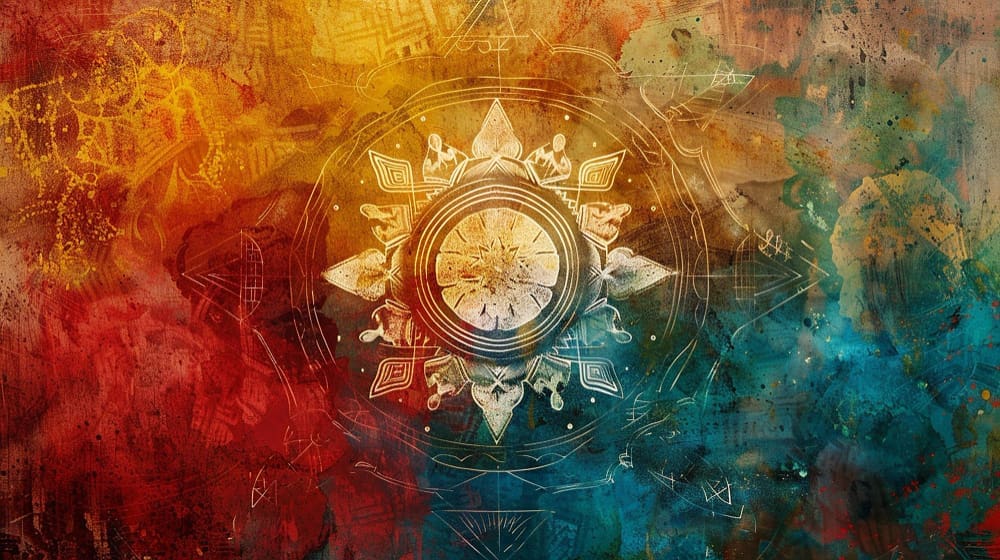In the intricate celestial tapestry of Vedic Astrology, the 27 Nakshatras, or lunar mansions, provide a profound layer of insight beyond the 12 zodiac signs. Yet, to truly unlock the specific destiny and karmic blueprint encoded in a birth chart, one must look even deeper into the four subdivisions of each Nakshatra, known as Padas or ‘steps’. These Padas are the foundational pillars that connect the Nakshatras to the zodiac signs and the four core aims of human life—Dharma, Artha, Kama, and Moksha—offering a granular level of detail that refines a planet’s expression from a broad archetype into a precise, personal narrative. Understanding the Pada of your key planets, especially the Moon and Ascendant, is what distinguishes a general astrological reading from a deeply personalized map of your soul’s journey.
A Refresher on the Nakshatras
Before diving into the Padas, it is essential to grasp the role of the Nakshatras. The 360-degree zodiac is divided into 27 Nakshatras, each spanning an arc of 13 degrees and 20 minutes. While the Sun-based zodiac signs (like Aries or Taurus) reveal our personality and ego expression, the Moon-based Nakshatras unveil our subconscious patterns, emotional responses, and the inner workings of our consciousness.
Each Nakshatra is ruled by a specific planetary lord and has a presiding deity, a symbol, and a core motivation. They are considered the “mansions” in which the Moon resides as it travels through the sky, coloring our mind and experiences with their unique energy. For example, two people with their Moon in the sign of Aries may have vastly different emotional temperaments if one has the Moon in Ashwini Nakshatra (pioneering, fast-acting) and the other has it in Bharani (transformative, intense).
Introducing the Padas: The Four Steps of Cosmic Energy
The term Pada in Sanskrit translates to ‘foot’ or ‘quarter’. Just as a journey is made up of individual steps, the journey of a planet through a Nakshatra is defined by its passage through four distinct Padas. Each Nakshatra’s 13°20’ arc is precisely divided into four equal sections of 3°20’ each.
This division is not arbitrary. With 27 Nakshatras each having four Padas, we arrive at a total of 108 Padas in the entire zodiac. This number, 108, is sacred in many Eastern traditions, representing the wholeness of cosmic existence. It is the number of beads on a mala for chanting mantras, signifying the completion of a spiritual cycle. In astrology, these 108 Padas represent the complete spectrum of human potential and karmic expression.
The Critical Link: Padas and the Navamsa Chart (D9)
The true genius of the Pada system lies in its direct link to the zodiac signs and, most importantly, the Navamsa or D9 divisional chart. The Navamsa is considered the most crucial divisional chart after the main birth chart (Rasi or D1), as it reveals the soul’s inner promise, the nature of one’s marriage and partnerships, and the fruits of one’s karma in the second half of life.
Each of the four Padas within a Nakshatra corresponds to one of the 12 zodiac signs, starting with Aries and proceeding in order. For example, the first Nakshatra, Ashwini, is located entirely within the sign of Aries. Its four Padas correspond to the Navamsa signs of Aries, Taurus, Gemini, and Cancer. The next Nakshatra, Bharani, continues the sequence with its Padas corresponding to Leo, Virgo, Libra, and Scorpio.
This means that a planet’s position in a specific Pada in your birth chart (D1) determines its sign placement in your Navamsa chart (D9). This is the key that unlocks the D9 chart. A planet may be in Aries in the main chart, but its Pada placement could give it the underlying quality of a completely different sign—like Cancer—in the Navamsa, profoundly altering its manifestation in your life.
The Four Aims of Life: Dharma, Artha, Kama, Moksha
The Padas are also systematically aligned with the four Purusharthas, or the fundamental aims of human existence. This reveals the underlying motivation behind a planet’s energy in that specific quarter.
Pada 1: Dharma (Purpose)
The first Pada of any Nakshatra is always a Dharma Pada. It is associated with purpose, righteous action, and one’s innate duty. These Padas correspond to the fire signs (Aries, Leo, Sagittarius) in the Navamsa. A planet in a first Pada is driven by a pioneering, self-expressive, and soul-searching energy. It seeks to initiate and act in accordance with its core principles.
Pada 2: Artha (Wealth)
The second Pada is an Artha Pada, concerned with material security, wealth, and the resources needed to sustain life. These Padas correspond to the earth signs (Taurus, Virgo, Capricorn) in the Navamsa. A planet here is focused on grounding ideas, building tangible results, and achieving stability in the material world.
Pada 3: Kama (Desire)
The third Pada is a Kama Pada, related to desires, relationships, and intellectual or social fulfillment. These Padas correspond to the air signs (Gemini, Libra, Aquarius) in the Navamsa. A planet in a third Pada is communicative, sociable, and driven by a desire for connection, harmony, and the enjoyment of life’s pleasures.
Pada 4: Moksha (Liberation)
The fourth and final Pada is a Moksha Pada, focused on spiritual liberation, introspection, and letting go. These Padas correspond to the water signs (Cancer, Scorpio, Pisces) in the Navamsa. A planet here is introspective, emotionally deep, and seeks to understand the deeper mysteries of life, often leading to profound psychological and spiritual transformations.
A Practical Example: The Four Padas of Rohini Nakshatra
Let’s examine Rohini Nakshatra, which spans from 10°00’ to 23°20’ in the sign of Taurus, to see how the Padas work. Rohini is known for its charm, creativity, and connection to growth and abundance.
Rohini Pada 1 (10°00′ – 13°20′ Taurus)
Navamsa Sign: Aries. Aim: Dharma.
A person with their Moon here combines Rohini’s desire for luxury and beauty with the fiery, pioneering spirit of Aries. This placement fuels a passion for acquiring beautiful things and can indicate a leadership role in creative or financial fields. There’s a strong drive to act on their desires.
Rohini Pada 2 (13°20′ – 16°40′ Taurus)
Navamsa Sign: Taurus. Aim: Artha.
This is a powerful placement known as Vargottama, where the planet is in the same sign in both the D1 and D9 charts. The Taurean qualities of Rohini are amplified. This person is exceptionally grounded, stable, and has a profound talent for creating lasting material wealth and comfort. Their focus is squarely on accumulation and security.
Rohini Pada 3 (16°40′ – 20°00′ Taurus)
Navamsa Sign: Gemini. Aim: Kama.
Here, Rohini’s creative and artistic nature is blended with the communicative, intellectual energy of Gemini. This produces great talent in music, writing, or any art form that involves skillful communication. They are charming, witty, and adept at using their talents for social and commercial success.
Rohini Pada 4 (20°00′ – 23°20′ Taurus)
Navamsa Sign: Cancer. Aim: Moksha.
The material focus of Rohini becomes more emotional and inward-looking. This person is deeply attached to family, home, and comfort, but their desires can become excessive or possessive. The Moksha aim suggests a life lesson in learning to detach from material possessions and find security from within.
The Significance of Gandanta Padas
Special attention must be paid to the junction points between water and fire signs. The last Pada of a water Nakshatra (like Ashlesha, Jyestha, or Revati) and the first Pada of a fire Nakshatra (like Ashwini, Magha, or Mula) are known as Gandanta points.
Gandanta means “karmic knot,” and planets placed in these Padas signify deep-seated psychological and spiritual challenges that must be untangled in this lifetime. These are points of profound transformation, where old karmic patterns die and a new spiritual consciousness is born. Individuals with prominent planets in Gandanta Padas often experience intense, dramatic events that force them to confront their deepest fears and evolve.
Why Padas Are Essential for an Accurate Reading
Incorporating Padas into an astrological analysis elevates it from a general overview to a specific, actionable guide. They show us that two people with the Moon in Taurus can be fundamentally different; one might be a pragmatic builder (Rohini Pada 2) while another is a gifted and intellectual artist (Rohini Pada 3).
The Padas provide the ultimate layer of nuance. They pinpoint the underlying motivation of a planet, reveal its hidden strength or challenge through the Navamsa chart, and explain the subtle yet powerful forces shaping our life path. By understanding the step-by-step progression of energy through the Nakshatras, we gain a much clearer picture of our personal karma.
Ultimately, the Padas are the microscopic keys that unlock the macroscopic story of the cosmos written in your birth chart. They are the intricate threads that weave together the signs, planets, and houses into a unique and personal destiny. To know your Padas is to take a significant step closer to understanding not just who you are, but the profound purpose you are here to fulfill.








